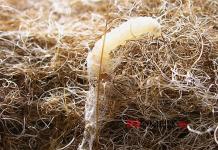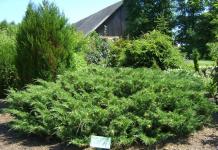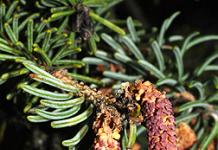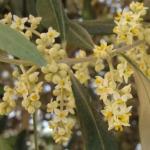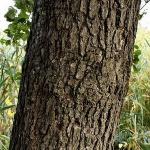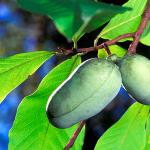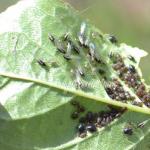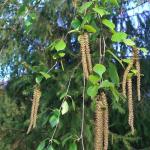Leaf aphids of any species, green or black, feed on plant tissues, mainly young shoots, eat leaf and flower buds.
The harm from it is colossal, first of all, because the leaf aphid reproduces very quickly, forming huge colonies in a matter of days and producing about 50 colonies per season.
In addition to the general weakening of the plant: deformation of leaves and entire branches, loss of peduncles, buds, ovaries and fruits, aphids secrete sticky secretions that clog the stomata of the leaves, or a fungus settles on them. When biting through leaves, aphids can spread viral diseases.
Aphids can completely destroy young plants with one or two growth points.
The harm from aphids is aggravated by the fact that it is completely indiscriminate in plants, it devours everything: garden flowers, seedlings and adult vegetables, fruit trees, shrubs and herbs.
She has special preferences, for example, plums, cherries, roses, currant aphids are one of the first to be affected. Here, different types of aphids have their own taste preferences, black aphids prefer fruit ones - currants, apple trees, plums, green aphids - roses, chrysanthemums and other flowers. However, this is not a general rule, sometimes it seems that aphids eat everything!
Where do aphids come from on plants
A fertilized female aphid lays her eggs on the branches and bark of trees, in the root zone, as a rule, in secluded and hard-to-reach places. Eggs overwinter quietly in clutches, or ants keep them until spring, and then settle in any of the most attractive plants.
In the warmth of the eggs, adults of wingless females rapidly develop, capable of reproducing without fertilization - they produce the main hordes of enemies of our crop.

By the end of June, and in warm weather by the end of May, a new form of adult insects appears in the aphid colony - flying females. They are the reason for the wide spread of pests. They are called aphids-settlers, their task is clear and understandable - to cover as large a territory as possible and lay the next generations of eggs. If we take into account the help of the wind, then the resettlement of pests is several tens of kilometers from the place of departure. After mating, the females lay overwintering eggs, and a new cycle begins in the spring.
You may have noticed such a phenomenon when aphids either disappear on their own, then reappear on plants - these are dioecious aphids, in the first half of the season they actively reproduce on some plants, and with the advent of winged females they move to another group of plants, at the end of summer - early autumn, they return to the first bushes again.
Ants also contribute to the resettlement of aphids - they feed on a sweet syrup that aphids secrete (honeydew). Ants, like proper farmers, grow aphids, take care of their eggs, protect them from other insects, and are constantly at the food source, trying to increase plantations.
Aphid prevention
Is it necessary to repeat the banality that it is easier to prevent the invasion of aphids than to fight it? However, any gardener will tell you that he noticed how aphids progress on some plants, on others they are rather lethargic and not numerous.
The point is in the state of the plants themselves, if they are healthy, the trees and shrubs are whitewashed, aphids do not start on them or there is very little of it.
In the fall, remove the garden plot from leaf litter, mow weeds in tree trunks. At the time, cut out tops and basal shoots on which eggs can hibernate.

During the spring and summer, deter or destroy anthills. The complete destruction of anthills, as a rule, is not justified, since in a cold windy or rainy summer, ants remain almost the only pollinators of plants (non-flying weather sets in for bees and bumblebees).
To protect trees from ants, you need to destroy anthills located in close proximity to fruit bushes and trees. Then, so that the ants do not pave a new path, a strip of dry wood ash should be poured around the trunks - it, like the Chinese border, will protect the approaches to the trees. If the rain washes away the ash, you need to renew the dressing.
Whitewash against aphids
It is necessary to whiten the trunks of fruit crops not in the spring, as is customary for most gardeners, but in the fall, preventing the laying of pest eggs and destroying spores of pathogenic fungi.
First you need to clean the trunks from lichens, mosses and exfoliated bark with a brush - for old trees with metal, for younger trees - with stiff bristles. Rinse all damage to the bark and cracks with iron sulfate and cover with garden pitch.
For whitewashing with a 20% lime mortar, you need to take:
- 2 kg of slaked lime and diluted in 10 liters of water or
- Dilute 1-1.5 kg of quicklime in 10 liters of water
In addition, there is another recipe for whitewashing: dilute 2.5 kg of lime, 1 kg of clay and 0.3 kg of copper sulfate in 10 liters of water.
In garden centers, you can buy ready-made whitewash based on lime and adhesives.
When whitewashing tree trunks, in addition to direct toxic contact, you seal already laid aphid eggs or their possible hiding places. But in the spring, whitewashing needs to be repeated.
You might argue that aphids are flying insects and can settle on trees even with whitewashed trunks. However, the most dangerous time for plants is the opening of young leaves, flowers, the formation of buds, and this is early spring. By the time aphids form females capable of flying, trees protected by whitewashing, they have time to flourish, the leaves open and become coarse, and become aphids too tough.
Improvement of berry bushes
In order for berry bushes not to be affected by aphids, it is necessary to carry out the correct agricultural technology:
- Do not overfeed them with nitrogen - a nitrogen-rich fertilizer makes plant sap sweeter and more attractive to aphids. It is especially dangerous to apply nitrogen fertilizers in the second half of summer.
- Make more ash - the need for fruit crops in potassium is very high. Potassium strengthens the cell walls of plants, increases the overall resistance of plants to stressful situations, such as cold. Aphids are able to bite through only a thin, delicate epidermis; they cannot gnaw through leaves with a dense skin.
- Do not overfeed the trees, but use fertilizers containing not only nitrogen, potassium and phosphorus, but also trace elements (boron, zinc, molybdenum, iron).
- Strictly monitor the acidity of the soil - plants absorb nutrients only when the soil pH is optimal for them.
- Replenish calcium in a timely manner. Apply lime on soils rich in humus or peat bogs (1-2 kg of fluff per 3-4 year old currant bush for digging), and on sandy and sandy loamy soils - dolomite flour. Recall the approximate application rates of dolomite flour (less on light soils, more on heavy soils):
- acidic soils (pH< 4,5) 500-600 г/кв. м
- medium acid (pH 4.5-5.5) 450-500 g / sq. m
- slightly acidic (pH 5.5-5.8) 350-450 g / sq. m
Aphid control
Watering with boiling water
Currants and gooseberries can be watered with boiling water when there is still snow on the site, and the snow has thawed in the near-stem circles of the fruit bush (about 70 cm in diameter). Those. the snow on the branches has already melted, but the buds are still dormant, not swollen!
Heat water to a boil, pour into a watering can with a sprinkler nozzle. Then immediately water the bushes along the branches and the soil around the bushes. A small bush takes about one watering can. When boiling water is poured into a cold metal watering can, the water temperature drops to about 80 degrees, when watering on branches, its temperature drops to 70 degrees.
This technique allows you to destroy not only the aphid eggs preserved on the shoots, but powdery mildew spores, mite masonry.
You can add 3 drops of iodine per 10 liters of water to the water, from other diseases. It is important not to keep the watering can strictly in one place during watering, i.e. you need to scald, and not rinse the branches in boiling water!
Ash dusting
In the spring, before the leaves fully bloom (it is possible at the stage of bud opening), wet the branches with water and dust with sifted wood ash for moisture.
A solution of soap and aphid ash
Pour 300 g of ash (2 cups) in a bucket with 10 liters of boiling water, add 50 g of laundry soap shavings and leave to infuse overnight. Pour the solution into the sprayer through triple gauze so as not to clog the sprayer with ash grains. Process all branches during bud break, at the stage of young leaves (salad greens).
Treatment of aphids with soap and domestos
For 10 liters of water, take 100 g of tar or black laundry soap, add 5 drops (with a pipette) of domestos (or any preparation containing chlorinol). You can spray on bare branches and at the moment when the leaves have already blossomed. 10-15 minutes after treatment, wash the leaves with clean water from a hose. The procedure can be repeated after a couple of days.
Ammonia
Another proven way to deal with aphids is ammonia. Two tablespoons per bucket of water, add 1 tbsp. a spoonful of liquid soap. Helps almost instantly. No need to rinse.
Dog aphid shampoo
Flea shampoo for dogs and cats has active ingredients of the pyrethroid class, they are toxic to aphids, i.e. the composition of the solution will be the same as, for example, the solution of the insecticide Iskra. The only difference is that the shampoo contains surfactants, i.e. adhesives. It is quite difficult to calculate the rate of shampoo (the concentration of the active substance is different).
A safe dosage for plants is about 1 tbsp. spoon on a bucket of water (per 10 liters). Higher concentrations can cause leaf scorch!
Aphid preparations
There are many aphids, the question is how effective they are. It must be understood that systemic preparations (solutions or tablets stuck into the ground) act from the inside - when plants are absorbed by the roots.
Enteric-contact preparations will help only if the leaves and branches are thoroughly moistened. When the aphid collects a colony, the leaves shrivel, curl up and the solution does not reach them. In this case, before spraying with aphids, you need to cut off the tops of the shoots with deformed leaves. This is possible on currant or gooseberry bushes.
On large trees and tall shrubs, it is technically impossible to pick aphids manually, cut nests, so the success of the enterprise depends on how well you spray.
Aphid spray time:
- on the branches until the leaves open
- before flowering in the phase of the beginning of budding
- after flowering during the growth of ovaries
- 30 days before harvesting fruits and berries
In general, three classes of insecticides work against aphids: pyrethroids, organophosphates, and neonicotinoids.
It is best to use systemic neonicotinoids:
- (thiamethoxam) or Confidor (imidacloprid) - they can be watered and sprayed. Help on "Hurrah". The problem with these drugs is that they are insanely expensive for an ordinary gardener: for example, for the summer of 2016, a sachet of actara 4 g costs about 100 rubles - this is for 5 liters of water. If there are a lot of aphids in the garden, and few trees and shrubs, processing is very expensive. Watering is expedient only on vegetables (cucumbers and tomatoes), on trees “from the inside” (with watering) the efficiency is low.
- Tanrek is also a neonicotinoid, the active ingredient is the same as that of confidor - imidacloprid, but the cost is lower, more affordable and very effective against aphids. Consumption of 3 ml per 10 liters of water - 5 liters per tree.
- Iskra Zolotaya - also the active ingredient imidacloprid, for spraying 5 ml / 10 l of water.
- Other analogues of Tanrek and Confidor: Biotlin Bau and Biotlin, Bison, Imidor, Kalash, Commander, Confidelin, Corado, Monsoon, Prestige, Respect, Taboo, Tsvetolux Bau. The principle of operation is the same, the prices are different, choose any.
Organophosphorus compounds Actellik (pyrimifos-methyl) and Karbofos, as well as their analogues - Antiklesh, Alatar, Fufanon, etc., also help against aphids, but recently there has been an increasing resistance to these drugs, so they are less preferred.
Of the permethrins, Kinmiks is available and effective to us,.
Bio-drugs from aphids
Preparations and Akarin are very popular in gardening. The advantages of their use are obvious - the active substance does not penetrate through the cell membranes into the fruits and leaves, i.e. does not accumulate in plants. The preparations are not toxic to bees already 4 hours after the sprayed leaves have dried.
♦ WHAT IT LOOKS WHEN ENLARGED?
A soft-bodied insect pest with an elongated oblong-oval body shape. The abdomen is wide and pointed at the end. Commonly found on indoor plants white aphid, the length of which reaches an average of 0.8-1 mm, the antennae are longer than the body. There are other types of aphids that feed on the juices of house flowers.
Most insects are translucent, and the color varies from yellow and green to pink and even black. Unlike the spider mite, which is hardly visible to the naked eye, aphids stand out quite clearly on houseplants. At the initial stage of the lesion, this pest seeks first of all to pierce the skin on the most tender parts of the home plant.
♦ HOW DOES IT GET TO THE HOUSEPLANE?
Aphids can enter the premises on clothes or things when you return home from the street;
Moves from a new plant to the entire home collection, if you do not organize a quarantine for the "newcomer" at least for a few weeks after the acquisition. During quarantine, it is necessary to thoroughly wash the plant under warm running water, sterilize the pot and change the substrate;
Some pests have wings at a certain stage of colony formation and easily move from one plant to another. If the female aphid enters the room through an open window, then it lays eggs on indoor species and after some time a colony is formed;
If during the summer period you place pots of house flowers in the garden, then aphids can quickly form a colony on them;
It is known that some species of ants willingly feed on honeydew secreted by aphids and transfer these pests from one plant to another.

- aphids with and without wings: photo
♦ HOW TO DETECT A PEST ON A PLANT?
◉ at the initial stage, a few insects can be found on the lower part of the leaf blade or along some sections of the stem. You can also find egg clutches of an oblong shape (not always - there are viviparous species of aphids);
◉ breeding, aphids form colonies and quickly settle on other indoor flowers. Colonies of insect pests appear on different parts of the plant;
◉ the top of the plant is noticeably deformed, yellow spots appear on the leaves. Then the leaves wither and curl, unopened buds begin to fall off;
◉ sticky traces of pest activity appear on the plant - a waxy liquid (pad or honeydew), similar to sticky pad from mealybug, flower thrips, scale insects or whitefly larvae.

- plants damaged by aphids: photo
♦ WHAT DAMAGE DOES APHIDS DO TO THE PLANT?
❂ aphid colony severely damages the plant and feeds on its juices, thereby quickly depleting it;
❂ leaves and stems are severely deformed, ugly spots appear, the decorative qualities of the plant deteriorate greatly;
❂ aphid leaves a large amount of honeydew on the surface of the plant, on which a dangerous sooty fungus appears;
❂ exhausted plants are susceptible to infection with a variety of viral and fungal diseases that can quickly destroy a flower.
♦ WHAT PREVENTION METHODS ARE MOST EFFECTIVE?
❀ carefully inspect the plant at least twice a week (especially in summer). If aphids are found at the initial stage of the lesion, then pest control will not take much time and the decorative qualities of the flower will not suffer;
❀ before transplanting the plant, sterilize the pot and all components of the earth mixture;
❀ regularly wash the plant under warm running water, wipe with a soft sponge and soapy water;
❀ ventilate the room more often. When opening windows in the summer, place sticky traps that attract insects by smell. Water and spray the flowers in time;
❀ place the pot with the new plant away from the entire collection. During quarantine, inspect all parts of the flower, transplant the "newcomer" into a fresh, sterilized earth mixture.
♦ HOW TO GET RID OF APHIDS FOREVER AT HOME?
➊ At the initial stage of infection, you can get rid of aphids very quickly and "painlessly" for the affected plant. First, mechanically remove insects with a cotton swab dipped in soapy water. Then wash thoroughly under a warm shower and lather all parts of the plant with a soft sponge with a solution of laundry soap. Without washing off the soap, hold the flower under a plastic bag overnight, and then wash with warm water.
➋ if the plant is not strongly affected by aphids, then we can use biological pest control methods. For example, it is effective to use garlic tincture. To prepare the product, pour 1 liter of warm water with garlic passed through a grater (30-40 gr.) And insist in a dark place for 24 hours. Before spraying the plant, add 3-4 grams of dissolved laundry soap to the tincture. Treat the plant 2-3 times with an interval of 4 days.
➌ Another effective folk remedy for fighting aphids is a decoction of tomato leaves. Grind 500 gr. tops, pour 1 liter of water and boil for half an hour, then cool in a dark place. Spray the plant with a decoction from a spray bottle, after adding 3-4 grams of liquid soap there.
➍ infusion of coniferous thorns. 400-500 gr. Pine or spruce needles pour 2 liters of warm water and put in a dark place to brew. After 5-6 days, you can use the tool. Before spraying, dilute the infusion with clean water in a ratio of 1: 7. Spray 3-4 times with an interval of 5 days.
➎ A very effective biological remedy that will help you quickly get rid of aphids - celandine infusion. You can use both fresh plants and dried ones (sold in a pharmacy). Grind 150 g of dry (350 g of fresh) grass and pour 1 liter of water. Insist 24 hours in a dark place. Spray 3 times with an interval of a week until the pests are completely destroyed.
➏ if the houseplant is very severely affected, then it is advisable to immediately apply emergency measures and treat with special complex insecticides. Such means as Fitoverm, Aktara, Kinmiks, Intavir, Karbofos, Iskra have proven themselves well.
Various pests can be found on trees and plants. Each species is dangerous in its own way for representatives of the flora. One of the unpleasant and harmful insects is. Small green or black individuals infect the plant in a short time, feeding on leaf juice, processes of the root system, and inflorescence buds. It is important for any gardener to understand where aphids come from on plants in order to take steps to eliminate them.
Reasons for the appearance of insects
Aphids cannot appear from "nowhere". There are several options for infecting a plant with this pest:
- From eggs laid in winter in fallen leaves, winged females appear at the beginning of the summer season. They mate with males and, once fertilized, fly around the surrounding area in search of a suitable tree or flower. Having settled in a new place, the winged individual lays eggs on the lower part of the leaf. Females capable of live birth without fertilization grow out of the young generation. It is they who create the main population of pests. From a large dominance of insects, the crop or the trees themselves can suffer greatly.
- After a large number is found, aphids will soon form there. This is due to the fact that ants are in symbiosis with aphids. Feeding on the sweet secretion from the abdomen of the bugs, shepherd ants move the pest to new leaves and protect them from other insects. Some species of ants breed aphids on the root shoots of plants.
- Indoor flowers are no less susceptible to pests than garden crops. Most often after soil renewal. Insect eggs can be found in soil purchased or gathered from the street. When purchasing a new plant in a store, there is a chance that it may be infected with aphids, which will readily crawl onto other indoor flowers. Winged females can enter an apartment through an open window or even through a mosquito net.
To protect the root system of a tree or flower, it is recommended to sprinkle the earth around the base of the plant with wood ash. Tree trunks are covered with 20% slaked lime in early spring.
On a note!
One female aphid can bring up to 3 new generations of individuals with a total number of about 100 thousand over the summer.
To deal with pest attacks in an apartment or house, the mosquito net on the window should be chosen as small as possible. Flower pots on the windowsill are a visual and fragrant guide. In order to prevent infection of your favorite flowers, they can be covered with a special covering material that can let in sunlight, but prevents insects from penetrating the plant. In addition, they help get rid of aphids. These include.
We present an overview of aphids on indoor plants with a photo and description. We consider in detail what it looks like, what are the signs of damage and where does it come from at home?
See in a separate article how to deal with a pest - the exact control measures and action plan.
Aphids on indoor flowers: an introduction
Aphids (Aphididae) belong to the class of insects from the order Hemiptera and are one of the most widespread pests of house plants.
The aphid is a sucking insect, there are more than 4000 of its species, of which more than 900 are found in Europe.
It is extremely difficult to determine its species affiliation, since the pest has a strong variability depending on many factors.
Some varieties of aphids affect only certain species, while others are able to attack different types of indoor flowers.
- The aphid has a wingless and winged form. If she has enough nutrients, then a generation of wingless individuals is born in very large quantities.
Since, most pest species reproduce without the participation of males (parthenogenesis). Wingless female aphids, after one fertilization, produce 10-20 times 100-150 larvae every 8-14 days, depending on environmental conditions.
When the amount of nutrients decreases (the plant dries up) and the colony grows rapidly, a winged generation appears in aphid species that change hosts. A winged individual can fly quite far, it moves to new shoots or a plant and already there forms a new colony.
Aphid males are born in autumn, the female lays eggs after bisexual fertilization for wintering in a secret place.
What do aphids look like on houseplants?
Therefore, on domestic plants, it is found in various shades of yellow, black, orange, pink, gray or green.
- From the experience of flower growers, we can say that white, black and green aphids are still more common on indoor flowers. They especially annoy flower growers at the end of winter and spring.
In a pest colony, larvae and adults, as well as wingless and winged forms, can simultaneously be present.
The size of aphids averages from 0.5 to 2 mm in length. The wingless female has an oval shape. The winged individual with two pairs of wings is larger than the wingless form.
Aphids on a leaf

Aphid eggs, larvae and adults

Aphid colony
Signs of aphids
The pest pierces the upper protective layer and feeds on the juice of indoor flowers, which leads to their weakening. Damaged leaves of the plant gradually curl, turn yellow and dry out, the tops of the shoots are deformed, and the buds fall off without blooming.
Often the leaves on a home flower do not just curl, but literally stick together. Florists notice aphids most often because of the deformed tops of young shoots in indoor flowers.
In the process of life, the pest actively secretes a sweet liquid (pad), on which spores of a sooty fungus or viral diseases settle. Sticky spots are easy to spot on the affected flower.
- Also, some aphid species can contribute to the development of anomalies (galls or gall-like formations).
In most cases, with a strong lesion, among the whitish and greenish dots (aphid colony), winged individuals can be seen in a magnifying glass.
Winged individuals appear when the colony becomes large and all pests lack nutrients.
Where to look for aphids on an indoor flower?
On a houseplant, the pest is quite easy to spot with the naked eye. It is not very mobile on plants and, as a rule, the aphid colony concentrates in the same places or moves very slowly.
Most often, clusters of insects are visible on the stems near the points of growth, on the underside of leaves or young shoots, which pests can stick to from all sides. Flowers, buds and fruits are also often affected.
The pest sheds a white shell as it grows, and sometimes it happens that there are more shed shells than the insects themselves.
What house flowers are most often affected by aphids?
At home, often suffer: anthurium, aroid, basil, balsam, begonia, gardenia, geranium, hydrangea, money tree (fat woman), dieffenbachia, dracaena, Kalanchoe, lemon, bulbous, prickly pear, orchid, petunia, indoor rose, violets, ficus and fuchsia.
Species of houseplants with dense and hard leaves (bromeliads, etc.) and those that secrete milky juice (euphorbia, ficus) are much less likely to be affected by aphids.
- According to the observations of flower growers, the insect never infects palm trees.
Where does aphids come from at home?
- The pest can enter the house along with plants or bouquets of flowers brought from the street (garden, cottage or garden) and the ground, and even on clothes. Therefore, it is important to check everything brought into the house for the presence of insects, and disinfect the garden soil.
- Also, aphids can infect indoor plants that were taken out to the balcony or garden.
- Often it appears in the apartment along with the air flow through the balcony or window. The females of the pest, once in optimal conditions, begin to actively lay larvae and increase the population.
- Often, aphids are brought into the house by ants, who are very fond of her sweet discharge (“fall”). And some ants protect aphids to feed on their sweet syrup.
- Particular attention should be paid to purchased home flowers and put them in a separate place for quarantine for 2-3 weeks.
ADDITIONS TO THE ARTICLE:
This is where we stop the story of this unpleasant pest. We hope that now you know what aphids look like, what flowers it affects, and also where it comes from at home.
Let there be no harmful insects on your flowers!
Aphids are one of the most malicious pests of garden and indoor plants, with which almost every summer resident or florist is familiar with firsthand. Indeed, due to their fertility, insects settle in huge colonies in summer cottages. Using plant sap as food, they are able to destroy entire gardens or fields. This article will tell you more about the pest.
Description of the insect
Hoping that a meeting with a dangerous enemy of the garden and the garden will not happen is still not worth it. It is better to arm yourself with knowledge and find out what aphids look like in order to prevent the possibility of harm.
- The aphid is a small insect whose size does not exceed 8 mm. Individuals living on houseplants are much smaller, about 0.5 mm.
- Depending on the species, the soft transparent body of a tiny pest may be in the form of a drop, oval or ellipse.
- The color of the aphid corresponds to the tone of the plant on which the insect lives. Often there are black, green, red, pink or completely transparent individuals.
- On the bumpy surface there are outgrowths and hairs of various density and length.
- Antennae are located on the trapezoidal head. They consist of several segments and serve as organs of hearing and touch.
- Thanks to complex compound eyes, which are black, red or brown, aphids are the owners of clear vision.
- The mouth of the aphid is a small proboscis, with which the insect makes a puncture in the leaf plate and sucks the juice out of it.
Interesting!
Thanks to well-developed visual perception, aphids can even distinguish some colors.
Insects move with the help of three pairs of long legs, which also perform jumping functions. Depending on the conditions of existence, there are aphids with and without wings. Moreover, a certain type of activity in a given colony is assigned to each individual. The presence of wings is not a sexual sign, so the winged aphid can be both female and male. A distinctive feature of wingless individuals are 3 additional simple eyes. A photo of aphids is presented below.

The abdomen is divided into 9 segmented parts. On the first seven spiracles are located. On the subsequent segments there are nipple tubes that perform excretory and secretory functions. The last segment is underdeveloped and looks like a hairy tail.
Nutrition
Pests live in large colonies. Settling on the plant, they primarily affect the leaves and young shoots. Aphids also eat flower buds, roots and stems of plants. As a result, plantings weaken and gradually wither. Insects do not disdain any vegetation. Only certain species of aphids prefer certain types of trees, shrubs or grasses.
Quite often they coexist with. The fact is that honeydew (a sweetish viscous liquid that aphids secrete in the process of life) is what the ant eats and loves very much. It is for this reason that garden goosebumps protect small pests from natural enemies: hoverflies and.
reproduction

With the advent of warm days, a wingless female emerges from the aphid egg laid in the autumn in the bark of a tree, which becomes the founder of the colony. In the spring, under favorable conditions, the female aphid, breeding parthenogenetically, gives life to similar virgin individuals.
On a note!
Aphid parthenogenesis is a form of sexual reproduction during which eggs in adult females develop without mating with males.
It is also surprising how long such an individual lives - for her relatively short life, and a virgin female lives no more than a month, she manages to reproduce several thousand similar creatures into the world.
Aphid larvae are similar to adults. They grow quickly, undergoing several molts. After two weeks, the young individual is already becoming sexually mature. Thus, the number of the colony increases several times. When it reaches a critical size, females with wings are born. Flying to other plants, they give life to new colonies. And only with the onset of autumn, the population is replenished with full-fledged females and males. After mating, females lay eggs, which overwinter and give rise to a new cycle.
What are the types of aphids
Insects are representatives of the Hemiptera order, in which there are about 4 thousand species (about a thousand live on the European continent). All varieties of aphids prefer warm and humid climatic conditions, which allow them to increase their population several times over. Under unfavorable conditions, pest colonies can simply die. Below are the most common types of pests.

domestic aphid
Room aphid, or as it is also called "home", includes several subspecies that differ in body color. There is a red aphid, as well as individuals of white, black or green color. This pest is especially well known to lovers of home flowers. They know .
Mealy aphid
The mealy aphid is a cream-colored insect with an oval-shaped body with bristles on the sides. The surface of the body is covered with a snowy white coating. Powdery aphids suffer from indoor and greenhouse plants, as well as citrus and. The presence of insects gives off a whitish tint that covers the leaves of the plant. This contributes to the deformation of the stem, drying and falling of leaves and buds.
potato aphid
Wingless individuals, the oval body of which is colored red or green. An insect up to 4 mm long has long antennae and a tail. This species is remarkable in that it is adapted to low temperatures. Vegetable crops serve as food for such insects: potatoes, beets or. In the winter season, potato aphids prefer to settle on indoor and greenhouse plants.
On a note!
You can detect a pest by the spots left by it, dried mesh or mold in places of large accumulation of honeydew.
cherry aphid
This type of aphid differs from its counterparts in a brilliant black color. Pests live predominantly, with the latter plant being more vulnerable. Eggs hibernate in buds and on tree branches; with the advent of spring, females appear from them - the founders of the colony.
Black aphids are especially active on young shoots and foliage in the spring season. With the advent of summer, the surface of the plants coarsens, which leads to the death of most of the colony. However, up to this point, insects manage to cause tremendous damage to fruit plants: growth retardation, the formation of a smaller number of fruit buds, small and non-juicy fruits. Cherry aphid-infested trees are more susceptible to disease and less resistant to frost.
grain aphid
This variety is an inhabitant of the steppe and forest-steppe zones; individuals also settle in fields sown with wheat, rye, barley or millet. The presence of insects during the period when the ear is not yet formed leads to the fact that the plants remain practically uneared. If pollination has already taken place, the grains are formed light and most often empty.
cabbage aphid
It is a wingless insect, the size of which does not exceed 2.5 mm. The body, covered with a grayish wax coating, has an ovoid shape and a yellow-green color.
Aphids lay their eggs for wintering in cabbage leftovers left on the site. By mid-spring, larvae appear from them, which, like adults, feed on plant sap. What inhibits the growth and development of a cabbage head.
apple aphid
There are 3 types of insects that threaten:
- Red (bloody) - the most dangerous type of aphid, whose representatives affect the root system of trees.
- Gray aphid - lives mainly on apple trees and hawthorn during the formation of leaves. From which only the foliage that has appeared is twisted, and the damage sites are covered with a characteristic dark red color. This leads to shedding of ovaries and stunting of damaged young shoots, as a result of which they do not survive in frosts.
- Green aphid - is a danger not only to apple trees, it also affects pear, shadberry and mountain ash. The areas damaged by aphids begin to turn black, and soot fungus appears on the branches.
leaf aphid
Leaf or grass aphids are active only in the summer, preferring young plants. She sucks the juice out of them, as a result of which the leaves and branches are deformed, which can even lead to the death of the seedling. It also settles on lawn and indoor flowers.
On a note!
The female winged flying aphid is yellow with a lemon tint, the wingless individuals are brown in color. It is this type of aphid that ants graze.
tobacco aphid
Tobacco (peach or greenhouse) aphid lives on tobacco, peach, almonds, and other plants. She settles on them at the very beginning of spring.
The peach aphid has a yellow-green color that camouflages it well on damaged plants. As a result of the presence of insects, the leaves turn yellow and become lifeless. Honeydew, which the pest releases in the process of life, leads to the appearance of a soot fungus, and subsequently to shedding of foliage. If you do not take timely measures to combat aphids, you can lose a large part of the crop.
To combat these insidious insects, there are good ones. If there is no desire to use chemicals, you can use those that have proven themselves in business.
